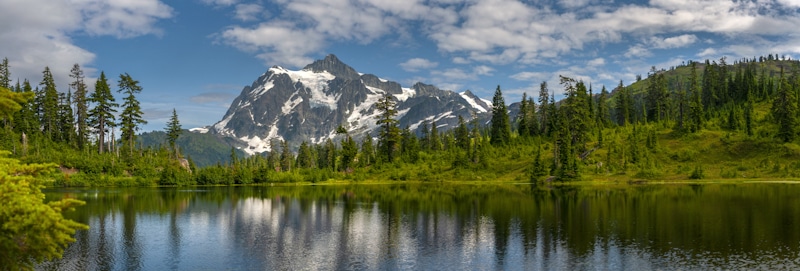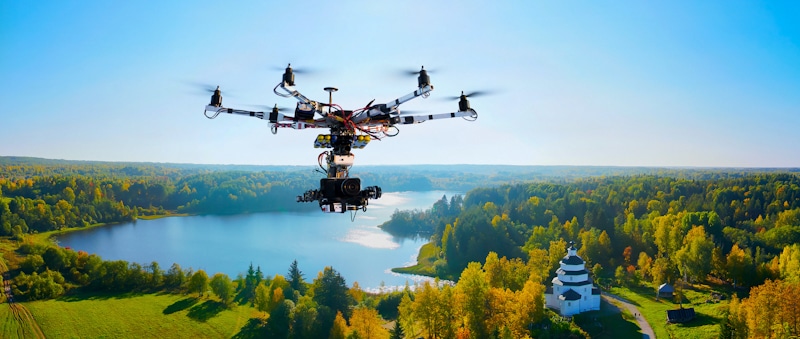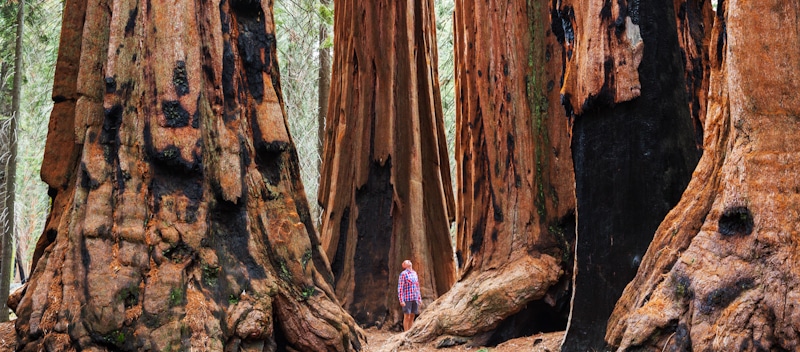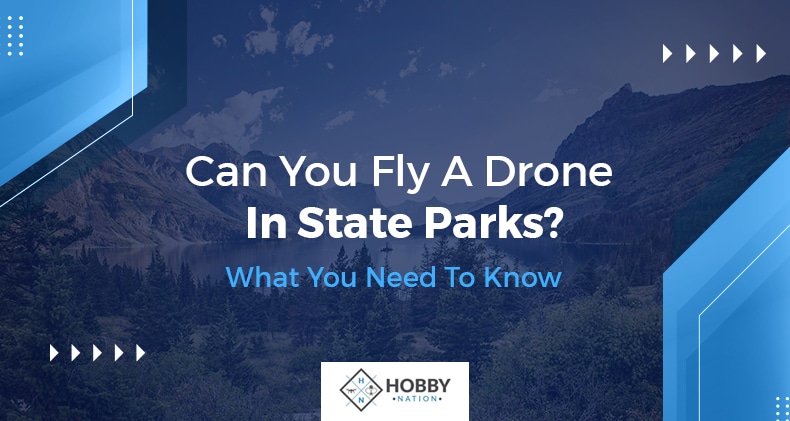Drones are now known as game-changer in the field of photography. However, most people wonder whether it is legal to use drones in state parks. Is it really prohibited and are there laws that one should one know before deciding to fly drones in state parks?
In general, flying drones in state parks is allowed and legal, except for areas that the District Superintendant has prohibited through a posted order. Drones may be prohibited due to public safety, protection of threatened natural and cultural resources, fire danger, recreational conflicts, etc.
Also, some local ordinances may restrict or limit the areas where the drones can fly due to population count, airspace, among other reasons.
The rules on drone flight in State parks are easily understood. According to the NPS, drones pose a security threat to the park staff and visitors. It also contributes to the noise, which can disturb the people. So in general, flying drones in any state parks or national parks is strictly prohibited by the law.
The laws that govern public parks are different. It also varies depending on the jurisdiction. So to be sure, it's best to do research and consult with the state authorities before you fly your drones in any of the national parks. You can also check the state's website to avoid getting into trouble with the law. In this article, we will look at why drones are not allowed in some states and some guidelines you need to adhere to.

Why are Drones Not Allowed in Some State Parks?
To understand better the legality of drones in state parks, it is important to first differentiate between public parks and national parks or state parks. A public park is defined as any common space which the local government funds. They vary in size and are open to all the people for recreation and sports. A public park typically has a children's playground, walkways, fish ponds, and other tools or equipment for recreation and sports.
On the other hand, national parks or state parks are managed and funded by the US National Park Services or NPS. National or State parks are usually erected around places with significant roles in history or possess cultural significance. In terms of size, a state park can be large enough to cater to wildlife.
Drones are allowed to fly in any state park, beach, and recreational areas unless stated by an order coming from a District Superintendent. These orders prohibit, if not limit, the use of drones for reasons such as protecting the different species that reside in a state park.
This is because drones may serve as a threat to cultural and natural resources and can harm the visitors. In most state parks, some rules are set to protect private and public property, animals, and sensitive plants. In other state parks, there are temporary limits as to where and when one can fly a drone in the park.
An owner cannot just decide to fly their drones in any public space, especially the parks. To be able to fly your drone in a specific national park or state park, you need to secure a Special Use Permit. However, these permits are issued for uses of drones in search and rescue and fire safety. This means that this permit is nearly impossible to secure if you want to use your drones in films and photoshoots or in delivering packages.
Can you Fly Drones in Florida State Parks?
The laws in the State of Florida regarding drones are strict. There are Florida drone laws that control drone usage in Florida. Other than the state laws, there are also local laws for use of drones in the state of Florida.
Aside from requiring all drone owners to register their drones, drones are not allowed to fly in any state parks in Florida. According to Florida's drone registration law, drone owners are required to provide truthful information when registering a drone. Violating this law is treated as a third-degree felony.
The administrative regulations in Florida prohibit the use of drones in all areas throughout Florida. These areas include the University of Tampa, state parks, and private properties such as houses. Florida also has strict rules against drone owners capturing any photos of a person without their consent. These laws are mandated to guarantee the protection of the privacy of the people residing in Florida.
While it is legal to fly drones over private properties in Florida, trespassing and nuisance laws still apply. You should neither fly the drone over an individual that is not a participant of the operation nor take photos of that may breach the right of privacy. In Florida, the police are allowed to use drones if they have a warrant to gather information.
What are the Guidelines for Flying Drones in State Parks?
There are rules governing and permits required for operating various types of drones in state parks.

For Recreational Drones
Recreational drones are used to take pictures for purposes like roof inspections, taking photos of buildings to sell them, or for websites. If you are using a recreational drone, you still need to secure a permit from the government.
Once you have secured this permit, you will be asked to comply with the different guidelines set by the FAA or Federal Aviation Administration. If your drones will fly over the area for recreational use, as a drone pilot, you have to abide by these rules or guidelines.
The FAA guidelines with regards to for recreational Unmanned Aircraft Systems (UAS) (https://www.faa.gov/uas/recreational_fliers/) include:
- Operate below 400 feet and always stay clear of obstacles in the surrounding
- Don't hamper with manned aircraft operations.
- The aircraft should always fly within the visual line of sight.
- It is restricted to operate within 5 miles of an airport, with the exception of contacting the control tower and the airport before flying.
- Don't fly near stadiums or people.
- The aircraft should not weigh more than 55 lbs.
- Don't operate under the influence of drugs or alcohol.
- Don't be careless or reckless when operating your unmanned aircraft. Otherwise, you could be fined for endangering life or other aircraft.
- Don't operate in adverse weather conditions like in high winds or reduced visibility.
- Don't operate near or over sensitive property or infrastructure like correctional facilities, power stations, heavily traveled roadways, water treatment facilities, etc.
- Don't conduct surveillance or take photos of persons in areas where privacy is expected without the individual's permission.
For Research Drones
Drones can also be used as a valuable tool in research and studies. If you are operating a research drone, you have to submit a proposal to the FAA. Once your proposal is approved, you will then need to submit a copy of the FAA authorization to the State Park district. This permit will allow you to fly your drones in a restricted area within a limited time.
For Public Agency Drones
If you work on a public agency and want to use a drone in a state park, you must obtain a COA or a Certificate of Waiver or Authorization. This certificate will allow you to use your drones in a specific area. If you operate a drone for governmental purposes in a state park, you are required to submit a copy of this COA to the State Park District before being fully allowed to fly.
What are the Penalties for Flying Drones without Permit?
If you are caught flying drones without a permit, you would be either asked to pay the fine of $5000 or face jail time for up to six months. This may depend on how long you were using your drone and the number of photos or videos you have taken.
Since the ban against drones exists in National Parks, violators are apprehended by the park rangers. The NPS is strictly enforcing this ban. According to Pilot Institute, one tourist faced this penalty for flying a drone over the Grand Prismatic Spring, Yellowstone National Park. No one knows if other cases preceded that.
The laws concerning the use of drones in public areas are different depending on who has the jurisdiction of the area. For this reason, drone users are advised to call their park staff and inquire about any specific order prohibiting drones.
The best thing one can do is to call or check the websites of these parks to know about their different laws. Remember that ignorance is not an excuse. Also, it is highly advisable to secure a permit before using your drone in any state park. This way, you will know what areas to avoid and how far you can go with your drone operation.
Tips When Flying your Drones in Public Parks
Once you found a state park where it is legal to use your drones without having to secure a permit or authorization, you still need to be a responsible drone pilot. Always keep in mind that the people in the parks are there to enjoy and relax. Since public parks tend to be crowded, it is important to ensure that you do not harm them or intrude on their activities.
To help you be a responsible drone pilot, we have compiled a few tips you have to keep in mind before flying in public parks.
1. Check your Airspace Classification and Gear
You can use any applications to check on the different airspace where you are allowed to fly. After doing so, make sure that you only fly within that area. Some public parks fall within controlled airspace, so you cannot fly beyond these areas.
As a safety measure, always ensure that you double-check your gears. By doing this, you assure the public that you will fly safely and not threaten any of them.
2. Always Ask for Permission Before Taking Photos
As a matter of courtesy, it is best to ask for permission before taking photos of the people in the park. While there are no laws for it, it is still best to ask permission, especially when using your drone around kids and families.
3. Don’t Fly Over the Heads of the People Directly
Suppose you are using your drones for commercial and recreational use, make sure not to fly directly over people's heads. Flight rules prohibit flying directly over the people's heads, specifically if they do not participate in the drone's shoot or operations.

Flying directly over the people poses a massive threat to their safety. The lives of these people will be put at risk if the drone crashes. Therefore, it is best to maintain a healthy distance or trajectory from the people in the park.
Conclusion
The best advice is for a drone owner to check up on the different laws governing the public place, especially the parks, before flying your drones at your disposal. Many drone pilots who do not know these laws end up being apprehended or paying the fine. Always remember that ignorance of these laws or not knowing these laws is not an excuse to get you out of legal trouble.
Shawn Manaher loves to play with new toys and dive into new hobbies. As a serial entrepreneur, work definitely comes first but there is always room for hobbies.

